- Getting around Lijiang. Dont stay in the Old Towns more than 2 days, there is nothing to do. KRISS Oct 9, 2013 05:46
- 2013 Beijing Temple Fair BENNYLAU Feb 26, 2013 03:29
- Malaysian traveling from KUL - LAX vis Shanghai PVG ZATI_DY Jan 3, 2013 20:15
Here lies the ancient Koguryo Kingdom
- Views: 6464
- |Vote: 0 0
- |Add to Favorites
- |Recommend to Friends
Welcome to Ji’an (集安)
Where the southwestern reaches of Jilin Province and North Korea are separated only by the faded blue Yalu River lies the small town of Ji’an. As unassuming a place as you could hope to find, Ji’an has one claim to fame that makes it popular with Koreans and sparked my interest enough to have me seek it out. Here, between the hills, can be found the remnants of the Ancient Koguryo Kingdom in China.
The Koguryo ruled their own 'state' over northern China and the north of the Korean Peninsular from around 100BC to 700AD. What remains of their extensive kingdom is scattered in three main areas: Wunushan (五女山) in Liaoning Province, Ji’an in Jilin Province and a third site in North Korea. The cultural ethnicity of the Koguryo Kingdom has been a contentious issue between China and Korea for some time and during the 1980s and 90s the sites were plundered and many artefacts stolen. Thankfully, all three areas are now UNESCO World Heritage Sites, protected “for the benefit of all humanity” and providing a unique insight into a civilisation that once held great power and influence.
It is possible to visit 5 sites that belonged to the Koguryo, each offering a different aspect of this civilisation and together combining to create a glimpse of an autonomous Kingdom that existed over 2000 years ago.
Site 1: The Tomb & Stele of Haotaiwang (好太王)
Haotaiwang, also named Tan De, the ‘Peaceful King of Vast Lands’ was the 19th king to rule over the Koguryo from 374 - 412AD. The stele was built by Tan De’s son, after his father’s death, to commemorate the reign and deeds of his father. It also tells the story of the founding of the Kingdom. The stele is over 6 metres high and inscribed on all four sides with nearly 1800 characters, although some are no longer recognisable. The stele is enormously important as the earliest written record of the Koguryo Kingdom.
The stele is now housed in a glass pavilion and the young guide I found there was working on an English version of the story. I took this to mean that the numbers of Westerners visiting must be increasing, although I was the only one this day. He asked me to check the English for him and gave me a personal tour of the stele. The floor around the stele was filled with money, notes from China, Korea and even an American dollar.
Venturing further into the landscaped grounds surrounding the stele, I came upon the tomb of Haotaiwang. It might be mistaken for a hill or outcrop of stones but it is in fact a complex arrangement including the tomb itself and an altar. The tomb is 66 metres wide and 15 metres high built in a pyramidal form and consisting of 21 layers of stone.
I ascended the tomb and at the top a single guard welcomed me and bade me to enter. The entrance is small and I was glad to find myself alone, it was instantly damp and cool and I walked forward to the Perspex screen. Beyond the screen I could see two stone coffins, great, thick, unadorned slabs. The guard explained that the coffins belonged to Haotaiwang and his wife; they were buried together.
Site 2: The Tomb of A General (将军坟)
Jiangjunfen, the tomb of the general, is visually very impressive. It stands over 13 metres in height and the four sides are each 31 metres in length. There is a much smaller, subordinate tomb located to the rear of Jiangjunfen that is believed to belong to a royal family member.
I climbed up the wooden steps and onto the generals tomb and I felt much higher than I actually was walking along the narrow width of stone to the entrance. Again, inside the tomb it was dark and damp and in the burial chamber itself were two more huge rectangular slabs of stone. The coffins were protected with Perspex but it was possible to walk around the edge of the chamber. The walls were layered with stone and hundreds of previous tourists had wedged coins into the gaps between them. It seemed like the walls were lined with seams of silver. A guide introduced the tombs in Chinese and I listened to the echoes of her voice and watched the twinkling coins.
The site was beautifully landscaped with rich orange yellow Rudbekias in swathes and well kept displays of bright summer bedding flowers. The site is also on a hill and affords good views of the surrounding countryside and Ji’an itself.
Site 3: The Wukui Tombs (五盔坟)
The least imposing of the four sites, the Wukui Tombs, look like a series of small neatly kempt hills with a few trees dotted around. There are actually 2 rows of tombs here belonging to high-ranking members of the Koguryo that date from the 6th Century AD. What makes these tombs worth visiting lies within the depths of the tombs themselves, the walls and ceilings of which are decorated with murals.
Sadly, Tomb 5 was the only tomb open when I visited which was a little disappointing. The site guide asked me if I could speak Chinese and when I told her I could understand a little, she led me into the tomb and through to the burial chamber. The chamber was gloomy and the light so faint that I could barley see the walls. The chamber was tiny, perhaps a couple of metres square. I stood in the semi-darkness not knowing what was going to happen next, realising belatedly that we were actually standing on the coffins themselves…
The guide produced a small torch with a small pale beam and began to illuminate sections of the wall, describing to me the glorious images that began to spring to life beneath the light. A silver dragon, a strange wolf-like creature, fairies and clouds, birds and tigers; even in the dimness I could appreciate the colour and variety of the images. It was a strange experience seeing the murals appear from and disappear back into the darkness; I had to wonder if they existed beyond the light. When it was time to leave the chamber the blackness hid the secret paintings once again.
Photographs are not permitted in the tomb, to protect the murals’ colours from the effects of bright light. However, there is a small gallery of the decorations from all of the tombs on the site, the information is all in Chinese, but the photographs of the murals are excellent. Only a little is known about the reasons for the murals and their significance in the Koguryo burial rituals.
Site 4: Wandu Mountain City (丸都山城)
Located about 20 minutes drive from the other sites, Wandu Mountain City lies in the foothills of the green mountains surrounding Ji’an. Little remains of this city built in 3AD and becoming the Capital of the Koguryo in 198AD. The perimeter wall measured nearly 7000 metres in length and various structures have been found within the walls including a palace, watchtowers, ponds and tombs. The city is believed to have been virtually destroyed in a war in 342AD.
It was easily possible to spend a couple of hours wandering around Wandu Mountain City, now intertwined inextricably with the fields of Ji’an’s farmers, some of whom sat quietly selling their wares along the little frequented paths. It was like walking through a miniature city in the midst of towering forests of sweet corn. The creamy stones of the city walls were collapsing into the sweetly gurgling streams and the symmetrical remains of the watchtowers were standing still against the sky. Imagination (helped by the English signage) was necessary to assemble these piles of stone into something resembling an ancient Kingdom’s capital.
From the hillsides it was possible to look down into a valley filled with more grassy mounds and square stone constructions which were part of a large Koguryo cemetery. There were “earthen” tombs (made from earth), “stone step” tombs (square stones were layered in a step-like, pyramidal form) and “piled-stone” tombs (stones of various shapes and sizes were piled randomly). Many of these tombs also contained murals but all of them were off-limits to visitors, the original entrances now sealed with thick metal doors. It was eerie to walk through the cemetery however and I found myself completely alone in this valley of tombs, stepping quietly so as not to disturb the sleeping Koguryo nobles.
Site 5: Guonei City
Guonei City, another city belonging to the Koguryo is now only recognisable as a long stone wall which bisects the town of Ji’an itself. Together with Wandu Mountain City it formed a strategic stronghold from where the Koguryo ruled and administered their Kingdom north of the Yalu River.
Now sited somewhat incongruously between the modern high-rise homes, Guonei’s city wall seems unimpressive. It can only leave the imagination to conjure up the lives the ancient Koguryos once lived here. That it stands preserved amid 21st Century Ji’an is perhaps its greatest feat, the final piece in this snapshot of ancient history, this curious, this little-known Koguryo Kingdom.
Information (August 2006)
Modern Ji’an
Ji’an bustles quietly between the Korean and Chinese tourist groups, the occasional lone Westerners and its Koguryo past. A thriving business in speedboat rides will take you for a zoom along the Yalu River and get you closer to North Korea. Walk the riverside promenade in the evening and dine out at one of the many Korean barbeque restaurants that fill the night with tantalising smells and red-lantern lights. Finally why not hop into the local KTV joint and sample red wine and ice before singing the night away.
Getting There
From: Tonghua (通化)to Ji’an (集安)
By: Bus
Cost: 19.50RMB
Time: 3pm departs Tonghua, approx. 2 hours to Ji’an
Reverse journey buses leave from Ji’an every hour going to Tonghua.
Koguryo Kingdom Sites:
Entrance tickets to all 4 sites mentioned are 30RMB each.
Site 5: Guonei City is free to view within Ji’an City (it’s simply a wall running through the city now)
All the sites have information boards in English but all the guides working within the sites give talks in Chinese which you are free to join or ignore.
Sites are located in and around Ji’an. I hired an air-conditioned car that took me in luxury to each site and waited for me the whole day. I paid 150RMB.
No public transport to the sites but plenty of taxis were around touting for business too.
Accommodation
Cuiyuan Hotel (翠园宾馆)
47 Shengli Road West, Ji’an
T: 0435 6222123
I recommend this hotel as it was reasonably priced, clean and the staff were friendly and helpful though they don’t speak any English.
I bargained a 220RMB room down to 140RMB: twin room, ensuite, 24-hour hot water, air-conditioning & water cooler. Also provided a hot & cold buffet breakfast 7am-8.30am.
UNESCO website containing a little information and cool panoramic views of the tombs can be found here: http://whc.unesco.org/en/list/1135



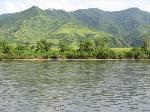
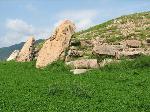

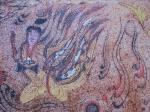
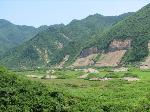
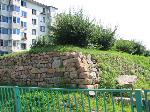
 Copyright © 1998-2026 All rights reserved.
Copyright © 1998-2026 All rights reserved.
1.
Oct 9, 2006 01:46 Reply
LEMONCACTUS said:
Yes, Cali. Interestingly the tombs at Xixia date from the 11th Century (I think), so are much 'younger', but are almost complete ruins. The jianjunfen tomb is in excellent condition and you can walk on it and in it, which of course does add to the whole experience.
Niaih, I'm not sure about 'kirugoya' ? I know the tombs as the Koguryo, as listed by UNESCO, although obviously in Korean/Chinese the name is different. In Chinese, I think the sites are: 高句丽王城王陵及贵族墓葬.
Apr 28, 2013 21:15
Mr.ADVENTURER from China replied:
Since there is so little information available on these sites, I thought I'd reply for anyone curious to visit: you can not walk on the General's Tomb now. I asked the guide how long that rule's been in effect and she told me four years.
2.
Oct 8, 2006 23:43 Reply
NIAIH said:
Dear Lemoncactus: The information covered so many questions I would have wanted to ask: and your writing style is wonderful - I'm watching for more views from where you are. Meanwhile, looking up the "kirugoya"(? - i'll check the sp) in my "A Brief History of Chinese and Japanese Civilizations" by Conrad Schirokauer and learn more.
3.
Oct 8, 2006 21:44 Reply
CALIFORNIA said:
Wonderful trip!Does jiangjunfen like Xiaxi Royal Tombs???
4.
Oct 6, 2006 23:36 Reply
MISHEN said:
Thanks for bringing this place to our attention - I'm very keen to visit!